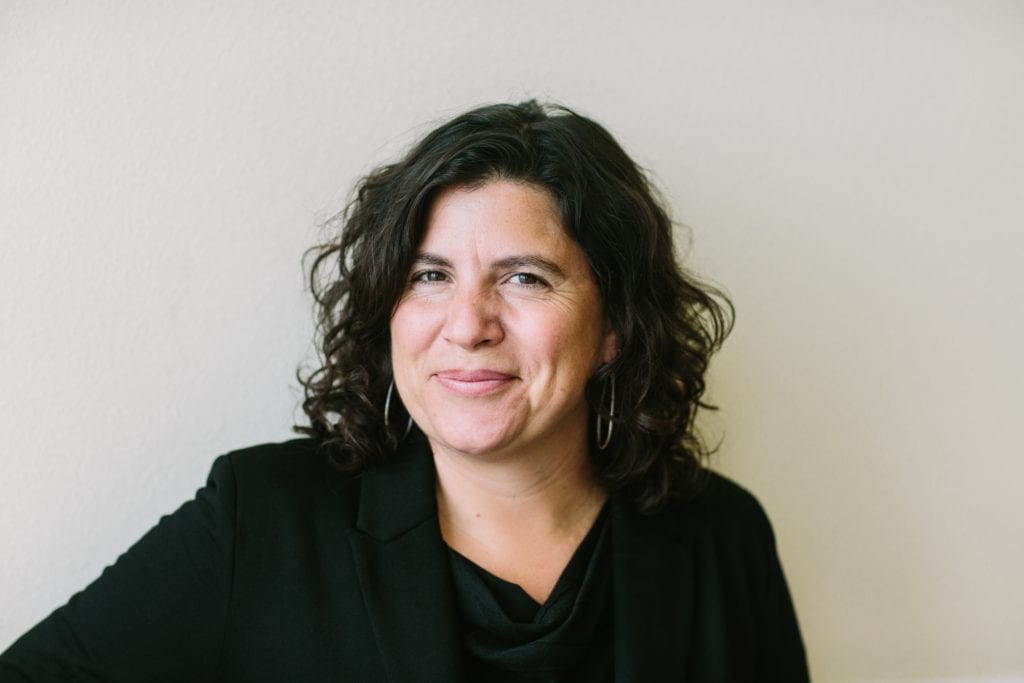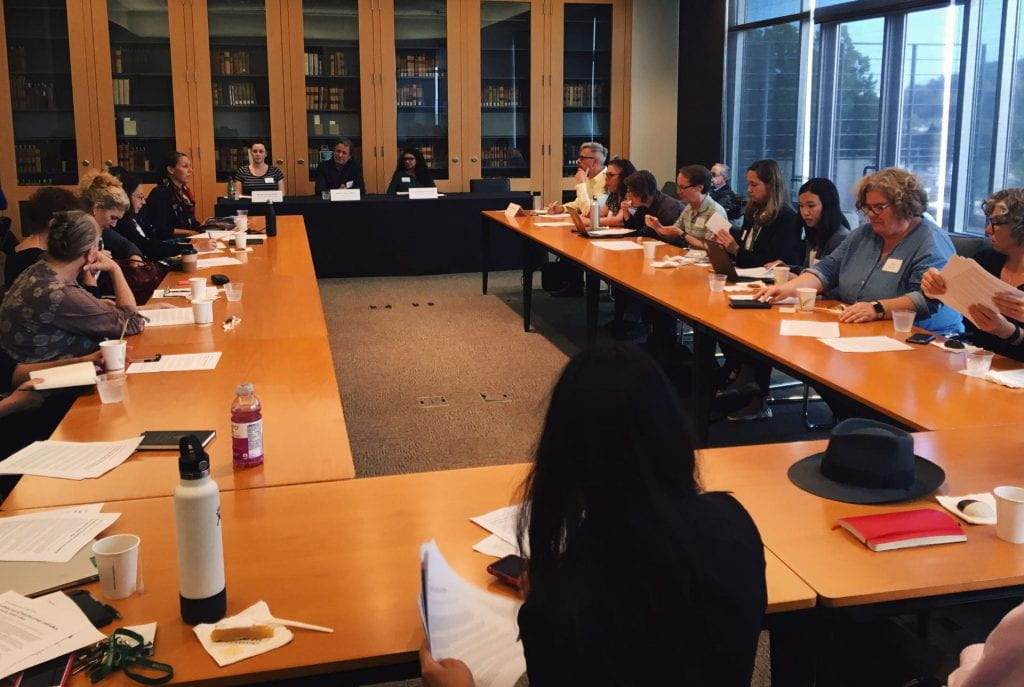Rachel Brahinksy began her career as a Bay Area reporter. During our conversation, we talked about her research, historical geography, and how San Francisco has changed over the years.

How did you first become interested in research?
Before I did my Ph.D., I was a journalist. I was always curious and wanted to find the stories that weren’t being told. Before that, in college, I took a lot of African American Literature classes, which opened up this narrative that was absolutely outside of the standard history that I had been taught. Experiences like that set me down the road of trying to find more of those stories. There’s a multiplicity of narratives and lives and relationships. The power dynamics at play, and how things are written, is really important.
How did you start with journalism?
I always wanted to write. When I was working on my undergraduate thesis my writing professor thought I was too political, and my politics professors wanted me to get away from the storytelling. I wanted both and thought both were possible. I went off and got an internship at The Valley Advocate, which is a lot like The Village Voice, The Bay Guardian, or City Paper, and did that for about a year. Then I came here for an internship at The Bay Guardian and was a reporter there for 5 years.
How did you transition from journalism to your Ph.D.?
I had repetitive strain in my arms from typing really fast all the time, which is what you do when you’re a reporter, so I went through a round of physical therapy to deal with that. I came out of that process a lot better physically but realized that it wasn’t sustainable for me to be at a desk in a stressed-out position all day long.
I wanted a different pace, and teaching was something I was always interested in. Ultimately, I was trained as a human/critical geographer. That does mean certain things about how I understand what matters and what to look for in research, but my work is very interdisciplinary. I bring history, urban planning, ethnic studies, African American studies, and a little bit of gender studies together in a geographical frame.
What are you working on now?
My primary book project evolved out of my dissertation, which was called “The Making and Unmaking of Southern San Francisco.” It was a story about Bayview Hunter’s Point, race, redevelopment, and industrial land use—and how all of those things fit together over the course of about 100 years, so it covers a long historical geography. I’m expanding that and the working title is Race in the City: A Story of Property. It’s a book about the way that race fits into those categories of property and ownership, how race and space make each other, and how urban change and urban development can help us understand both how race and racism are created and re-formed, and also how to deconstruct them. It’s a story of urban development and fights over social justice and urban planning.
I also have a collaborative book that is called A People’s Guide to the San Francisco Bay Area. It’s a social and political history of the Bay Area, mostly focused on social-movement histories in the form of a scholarly guidebook. We take you to lots of sites and tell stories about social movement histories that intersect with that place. It builds out of an urban field class that I teach at USF where we walk around different neighborhoods and I teach students about landscape theory and the history and politics of place.
Is there a story that really resonated with you?
When I was doing research on the Fillmore District and thinking about the intersecting displacement of African American and Japanese American communities, I came across this about this group of women in Bayview. People would say “If we had the Big Five around, things would be different—they knew what they were doing.” And I was like: what’s the Big Five? I ended up studying them—there were more than five of them, it turned out, and the people included in the group changed over time. It was an evolving organization. They were African American women who were struggling economically and financially in Bayview, and they saw what had happened in the Fillmore where twenty square blocks were razed to the ground by the redevelopment agency, with people displaced from their homes and businesses.
At the time, Bayview was covered with temporary war housing. It was never meant to be permanent, and about 20 years later it was falling apart. The redevelopment agency turned to Bayview and started making plans for clearance and development there. The Big Five went down to various meetings and said: “If you want to develop in Bayview, you have to come through us.” They persisted, and they became part of the redevelopment process. Bayview Hill was actually remade actually quite beautifully. The vision people have of Bayview now is distorted by time, but when housing was first remade on Bayview Hill with little cul-de-sacs, it was quaint and cute and welcoming. The streets are all named after these women, so you’ll see their names all around the hill: Eloise Westbrook, Marcelee Cashmere, etc.
But there was not really an economic development plan that came with the housing development plan, so Bayview continued to struggle, even though people were happy to be living in this brand-new housing. The end of the story is challenging, but there was this moment of about 15 years where community members were figuring out how to turn resources toward the community and learning how to work together to organize. There were challenges, but these women were what some people call street scholars, and they learned all the language of urban planning “setbacks” and “maximum heights.” They taught it to themselves and each other and they went down to the meetings and they said this is what we need in our neighborhood. And they kept doing it, and sometimes they would get hired. That gets complicated. Some people said they sold out because they were willing to become part of the agency, but what they won for the community was very significant. It was a small community effort where people learned from other neighborhoods and were really able to make a difference, for a moment.
How do you bring your research into the classroom?
My research shows up in the material through lectures, and sometimes a student will ask a very innocent question, which kind of sparks me to think, “I don’t know the answer and I need to go figure that out,” and it sends me down some new research paths. I find the teaching process really fun in that way. Ultimately, I want my students to leave with the capacity and curiosity to keep asking questions and to see that as an integral part of their lives.
Do you have a moment when a student asked you a question and it guided your research?
A couple of years ago I had students reading a book by Neil Smith, a classic book on gentrification. The question that came out was “what comes next after gentrification?” In some ways it’s simple—of course we don’t know what’s next, but when you’re studying cycles of urban change, you need to think about the patterns of the past and what they may be turning in to, as we study them. And there was something about the simplicity of that question that sent me down this research path, hoping to clarify the language I use when I teach about the changing city. There’s always something new to understand.

